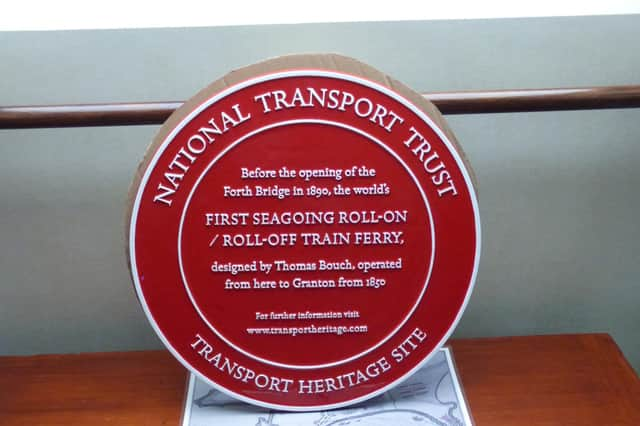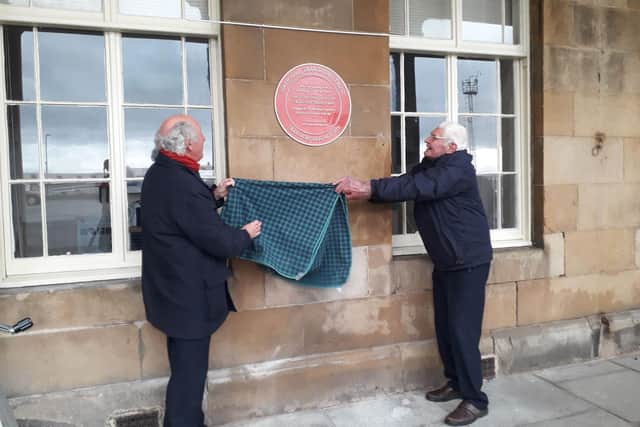Burntisland ‘floating railway’ gets prestigious recognition


The big unveil happened yesterday afternoon with the trust’s vice-president Sir John Cameron CBE, a sheep farmer from Baldouthie, unveiling the award at the invitation of Ian Archibald from the Burntisland Heritage Trust.
The wheel was erected on the wall of the town’s first railway station, built in 1847 to commemorate the train-ferry that linked Fife with Granton on the Edinburgh shore of the Forth for 40 years until the opening of the Forth Bridge in 1890.
Advertisement
Hide AdAdvertisement
Hide AdUp until last year there were no red wheels in Scotland, but now Burntisland joins a select list of Scottish stations including Paisley Canal and Glenfinnan to achieve the award.


It is planned that another red wheel will be put on the other end of the train ferry route in Granton, Edinburgh.
During the unveiling, Sir John Cameron paid tribute to the train ferry in reducing the Edinburgh-Dundee freight movement time from three days to four hours, carrying 29,000 wagons in the first six months of operation.
John Yellowlees, a spokesperson for the National Transport Trust said: “The award from us seeks to celebrate sites of transport heritage and Burntisland certainly is that.”
Advertisement
Hide AdAdvertisement
Hide Ad“It was not just the first train ferry, it was the first time ever that whole wagons had been loaded on as they were onto the ship and they carried off to the other end.
“In traditional ferries, the contents of coal or gain or whatever would have been unloaded and then packed on to the ship and then unloaded and packed onto the other end but now for the first time the vehicles went through.”
The so-called ‘Floating Railway’ between Burntisland and Granton had three main elements – an inclined pier at the dockside, a flying bridge to the vessel and a flat deck on-board lined with rails. A moveable framework rolled up and down the pier to suit the state of the tide.
This new and efficient way of moving freight traffic across water would influence the introduction of rail and road ferries right up to the present day.
Advertisement
Hide AdAdvertisement
Hide AdMr Yellowlees commented that what is particularly remarkable is the ‘hero of the hour’ who had designed the Burntisland train ferry service in 1850, Sir Thomas Bouch, went on to become ‘the shame of Victorian Britain’ when his Tay Bridge fell in 1879- considered by many as ‘the worst railway disaster of the Victorian age’, killing all aboard.
He added: “John [Cameron] found it somewhat ironic that such a successful development had been designed by Sir Thomas Bouch whose reputation would be destroyed nearly thirty years later when his Tay Bridge fell.
“He suggested that one could surmise the extent of his fame if he had only stuck to ferries and left bridges alone!”
Thank you for reading this article on our free-to-read website. We're more reliant on your support than ever as the shift in consumer habits brought about by Coronavirus impacts our advertisers.
Please consider purchasing a subscription to our print newspaper to help fund our trusted, fact-checked journalism.